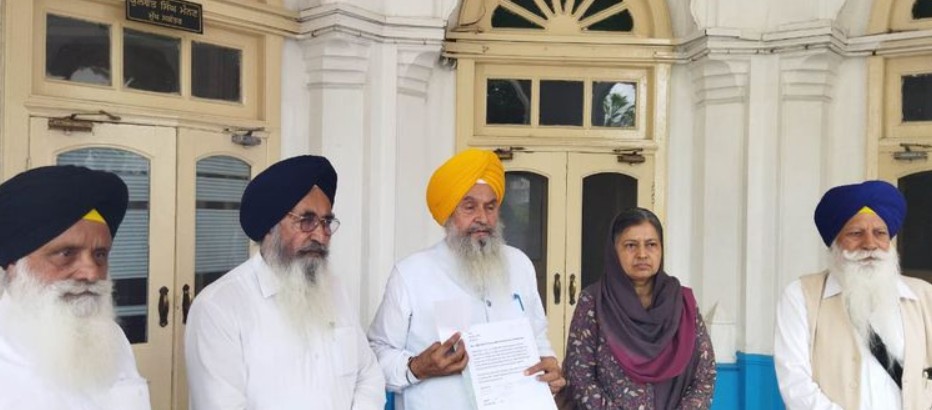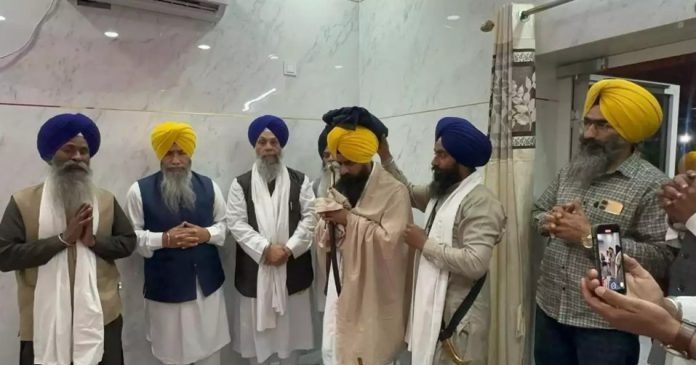The recent budget session of the Shiromani Gurdwara Parbandhak Committee (SGPC) has been marked by an intense demand to cancel resolutions that led to the removal of Jathedars of various Takhts. The issue has stirred significant controversy among Sikh religious and political circles, with various factions expressing their discontent over the past decisions taken by the SGPC leadership. The demand has reignited debates on the autonomy, governance, and accountability of the highest Sikh religious authorities.
During the budget session, a section of SGPC members and representatives from Sikh organizations vocally opposed the previous resolutions that resulted in the removal of Jathedars, particularly those from Akal Takht, Takht Sri Kesgarh Sahib, and Takht Sri Damdama Sahib. Many senior leaders argued that the dismissal of the Jathedars was politically motivated rather than being based on religious or administrative concerns. They stressed that such decisions should be made with greater transparency and in accordance with the principles of Sikh governance rather than external political pressures.
The demand to revoke these resolutions comes at a time when the SGPC is under scrutiny for its handling of key religious and administrative matters. Various Sikh groups, including prominent religious leaders and intellectuals, have criticized the manner in which Jathedars were removed, contending that the process lacked due consultation with the Sikh community at large. The role of political influence in SGPC decisions has been a long-standing concern, and the latest debate over the removal of Jathedars has further fueled these apprehensions.
One of the primary concerns raised during the session was the impact of these resolutions on the unity of the Sikh community. Jathedars of Takhts hold significant religious authority, and their removal or appointment carries deep implications for Sikh traditions and governance. Critics argue that the sudden and unexplained dismissal of Jathedars creates unnecessary divisions and weakens the credibility of Sikh institutions. Several speakers emphasized that the decisions to remove religious leaders should be revisited and reassessed through a democratic and consultative process involving the wider Sikh community.
The SGPC leadership, however, has defended the earlier resolutions, arguing that the removals were necessitated by specific circumstances that warranted changes in religious leadership. SGPC President Harjinder Singh Dhami and other senior functionaries maintained that the committee acted within its jurisdiction and in accordance with its responsibilities as the apex body overseeing Sikh religious affairs. They contended that while dissent and debate are welcome, reversing the decisions made through proper channels would set a problematic precedent.

Despite these justifications, opposition members have remained firm in their demand, calling for a thorough review of the resolutions and seeking a transparent inquiry into the removals. Many have pointed out that the process by which the Jathedars were removed was abrupt and lacked detailed explanations to the Sikh public. They argue that reinstating the ousted Jathedars or at least reassessing the decision through a consensus-driven approach would help restore faith in SGPC’s governance.
The broader Sikh community, including leaders from various religious and social organizations, has been closely following these developments. Some organizations have staged protests and held meetings urging the SGPC to act responsibly and ensure that the Takhts remain free from political interference. The growing demand for reforms within the SGPC and greater accountability in its decision-making processes have gained traction in recent years, with increasing calls for democratic engagement in religious governance.
Historical precedents were also invoked during the session, with members highlighting past instances where Jathedars were removed under contentious circumstances. The discussion drew parallels between past and present scenarios, emphasizing the need for a consistent, fair, and transparent approach in dealing with such matters. Several leaders insisted that the dignity and sanctity of the highest Sikh religious seats must be preserved, and any action impacting these institutions should be taken with utmost deliberation and respect for Sikh traditions.
The budget session, which primarily focused on financial planning and administrative matters, saw an unexpected level of engagement and debate on this issue, reflecting its deep significance to the Sikh community. As the session progressed, various proposals were put forward, including the formation of a special committee to review the resolutions and submit recommendations on whether they should be annulled. Some members suggested that the SGPC should hold a larger consultation with Sikh religious scholars, historians, and community representatives before making any final decisions.
While the SGPC leadership has not yet taken a definitive stance on whether the resolutions will be rescinded, they have assured that the concerns raised will be given due consideration. Given the widespread discontent, it is expected that the matter will continue to be a subject of intense discussion in the coming weeks. Political observers note that how the SGPC handles this issue could have lasting implications on its credibility and its relationship with the Sikh community.
Amidst these debates, another pressing issue has emerged: the broader need for structural reforms within the SGPC. Several members and Sikh intellectuals have called for a reevaluation of how major decisions are made within the organization. The calls for electoral and procedural reforms have gained momentum, with many advocating for greater involvement of the Sikh population in SGPC’s decision-making processes. Some have proposed that major religious decisions, such as the appointment or removal of Jathedars, should be subjected to wider community consultations rather than being confined to a select group within the SGPC.
In light of these developments, Sikh political and religious organizations are closely watching the SGPC’s next steps. The demand to revoke the resolutions removing Jathedars has become a significant issue that could impact the leadership and direction of Sikh religious governance. The ongoing discussions also reflect a larger discourse within the community about the role of traditional religious institutions in contemporary Sikh society and how they should function in an era of increased awareness and demand for transparency.
As the budget session concluded, no immediate resolution was reached on the issue, but the strong voices advocating for a reconsideration of the decisions were acknowledged. It remains to be seen whether the SGPC will take concrete steps towards addressing the concerns raised or whether the issue will lead to further polarization within the organization. For now, the demand to cancel the resolutions removing Jathedars stands as a testament to the ongoing struggle within Sikh institutions to balance tradition, governance, and accountability.


